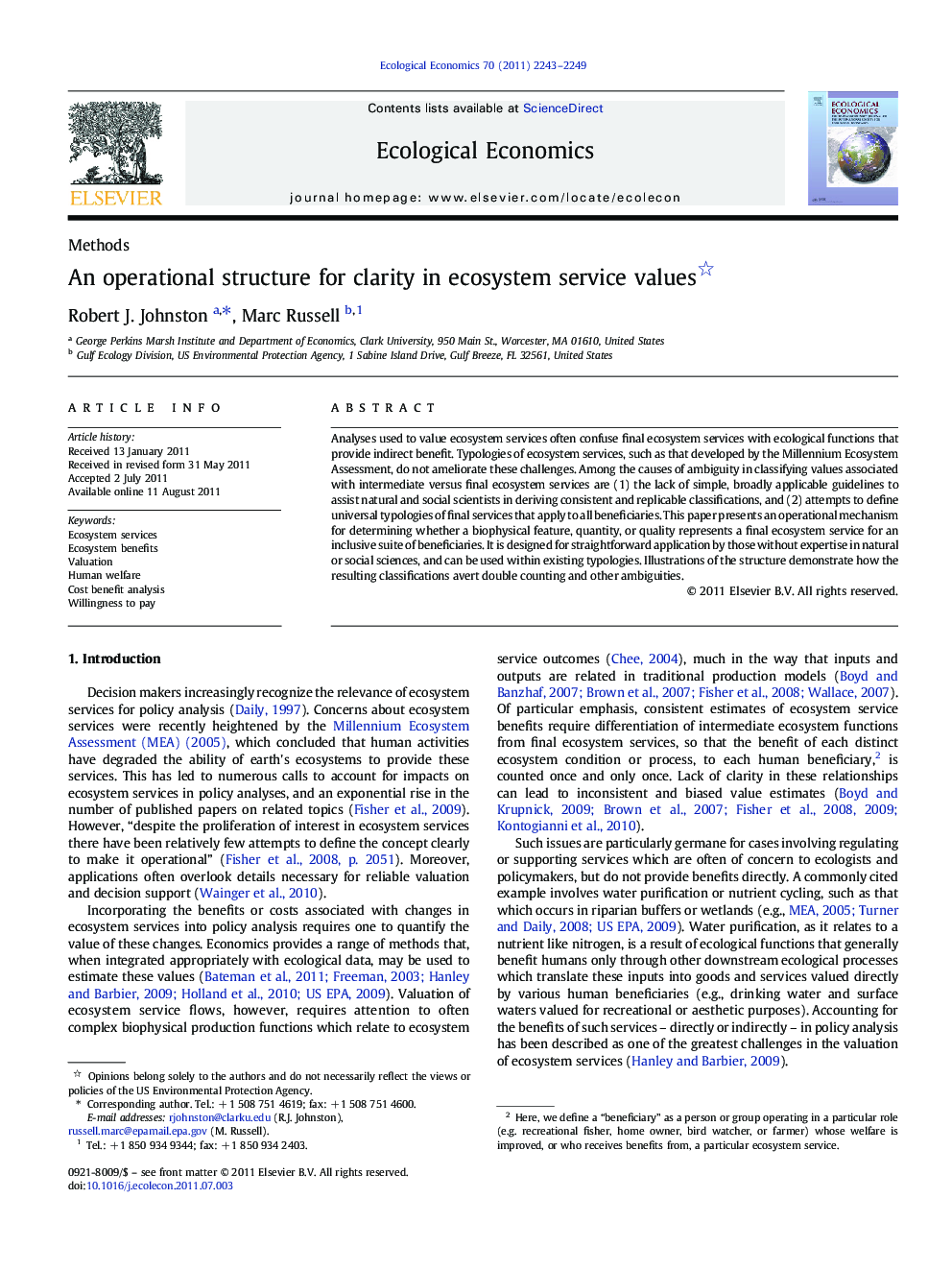| Article ID | Journal | Published Year | Pages | File Type |
|---|---|---|---|---|
| 5050488 | Ecological Economics | 2011 | 7 Pages |
Analyses used to value ecosystem services often confuse final ecosystem services with ecological functions that provide indirect benefit. Typologies of ecosystem services, such as that developed by the Millennium Ecosystem Assessment, do not ameliorate these challenges. Among the causes of ambiguity in classifying values associated with intermediate versus final ecosystem services are (1) the lack of simple, broadly applicable guidelines to assist natural and social scientists in deriving consistent and replicable classifications, and (2) attempts to define universal typologies of final services that apply to all beneficiaries. This paper presents an operational mechanism for determining whether a biophysical feature, quantity, or quality represents a final ecosystem service for an inclusive suite of beneficiaries. It is designed for straightforward application by those without expertise in natural or social sciences, and can be used within existing typologies. Illustrations of the structure demonstrate how the resulting classifications avert double counting and other ambiguities.
⺠Valuation of ecosystem services often confuses final and intermediate services. ⺠Simple rules can determine whether a biophysical outcome is a final service. ⺠The proposed guidelines allow final services to vary across beneficiaries. ⺠Use of the clarifying paradigm does not require natural or social science expertise. ⺠Proposed methods can be used within existing ecosystem service typologies.
